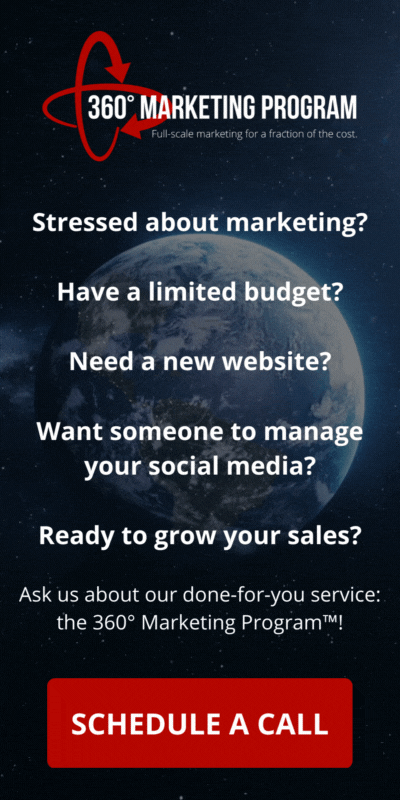In marketing, the ultimate goal is to lead consumers to your product or service and make a purchase – also known as a “sale” or “conversion”. It doesn’t matter whether it’s online or offline – marketing is performed with the same goal in mind. It’s the silent ambassador of your brand, the quiet salesman passively leading your customers to make the buying decision for themselves.
The problem is, lots of marketers – including myself – put out lots of content that no one engages with. Why is this? Is your copy too boring? Do your images turn people away, or fail to grab their attention? Is it an offensive topic that they simply scroll past on their news feed? It could be these issues, but most likely…
…they’re just too busy.
You, me, and everyone else on planet Earth is purely concerned with their immediate situations. We have work, school, family functions, hobbies, social media, emergencies, kids, chores, and all sorts of other facets of our lives that we deal with on a daily basis.
Save money. Grow online.
Learn what our 360° Marketing Program can do for your company to help you grow your business online!
But Paul, you might argue, I’m on MY phone all the time and see the ads consistently. I’m not THAT busy.
This is most likely true – during the course of a day, most people spend a collective average of 1.5 to 2 hours on their mobile devices. However, being “busy” doesn’t necessarily mean that you’re too busy to look at your social feed – it’s just that if you were to actually engage with an advertisement, even if it interests you, then it would take your time and attention that you simply don’t want to give.
Priorities
If you’re reading this blog in its entirety, first of all, thank you for reading. You’ve already proven to yourself that you’re willing to take time out of your day to engage with (what you hopefully perceive as) interesting and useful content.
Blogs and articles are an interesting content medium. They’re simply words on a screen, typed by someone sitting at a desk, café, or in this case my living room couch. They’re the embodiment of thoughts going through the author’s mind, and behind those words are an intended purpose.
My purpose is to help you find out why your content isn’t selling, and this blog doubles as a way for me to prove my expertise as a marketer, for what it’s worth.
Now, if you’ve gotten to this part of this blog, you’ve decided to make this article a priority to read. The reason is because you haven’t gotten what you wanted out of it yet, you find it interesting, or perhaps you think there’s some other golden nugget of knowledge I’ve provided that will help you along your own entrepreneurial journey.
Whoops, there it is! It’s all about how it can help you, right?
Exactly.
Your priority is you – your finances, your goals, your family’s security, etc. The same goes for EVERYONE out there who engages with social media. Their priorities are themselves, and rightly so. The only difference between humans of today and those several thousand years ago living an agrarian lifestyle is the technology. We’re all still trying to eat food every day, find things to entertain us, and so on. The basic needs of survival are still there, no matter how much money an individual has.
Fast Value
Writing a blog isn’t always a quick task – coming up with original content can be challenging, but it’s a lot easier if you have a specific “thing” to offer.
When people read a blog, for instance, they’re reading it either because it’s useful or entertaining. It provides news or helps to figure out an issue someone is dealing with. Blogs are a way to provide fast value, even though the process of writing the article itself may not be quick.
This goes for all other forms of content as well. Remember, people are concerned about themselves, and if they’re not provide valuable content quickly, in general they’ll scroll past your post, video, or carefully-design graphic.
People don’t give a damn if you spent 6 hours creating a 30-second, high-quality video, staying up until 1AM with your Red Bull energy drink, have to get up at 6AM for your day job, and then come home to a crying baby and a nagging partner (no, that’s not my life, I’m just giving you a harsh example!). The content is simply there, so if you are going to spend lots of time creating a masterpiece, make sure it’s worth their attention in the first place.
A lot of entrepreneurs these days rely on giving away free content. It’s the best way to provide fast value, and generally people are grateful for something free. If they like your free content – whether it be a PDF, a useful template, or a sample product that you send out to them – you grow in credibility to those customers.
Relevant Value
Another issue a lot of folks run into is that they’re creating content that isn’t relevant to many people, and the people that your content is relevant to never see it in the first place. Had they seen your content, you probably would get more engagement and conversion over the long haul.
This blog, for instance, has broad value – meaning, anyone who creates and publishes content with the express purpose of selling something can relate to it. Furthermore, this article probably appeals to you because your content isn’t selling.
Now, how does one make sure that your content is being placed in front of the right audience?
The first step is to understand the different types of content that you can publish online. Let me break it down Barney-style for you.
Organic Content
Organic content simply means naturally-published content on a social platform. Whether it’s just text, a photo, or video (live or prerecorded), it’s absolutely FREE to post organic content. The average Joe and Mary do this all day long – posting photos of their cats, how Trump is a racist bigot, why Obama was the worst President ever, blah blah blah, and other ridiculous nonsense.
You, my friend, are an intellectual. This is a long article, but you’re still reading. This blog has more words than most can say they read in a week combined! At least, in America.
Regardless, organic content can provide relevant value all day, every day, and you don’t have to pay a penny to post it.
The problem is, it’s much more difficult to provide relevant value with organic content. You cannot target audiences (unless you post inside of a Facebook group), and you cannot guarantee that it will reach a wide audience of your target viewers. You have to rely on your content being relevant, providing fast value, and not crossing the “priorities threshold” of social media users – in addition, they have to share your content for it to go anywhere.
Paid/Sponsored Content
Paying real money just so more people will see what you have to offer seems like a scam – but honestly, that’s what true marketing is. Human beings have paid other human beings for a few hundred years – maybe longer – to get their message out to the masses. These days, it’s distributed on television, newspaper, magazines, posters, billboards, and now we have the Internet.
As you’re well aware, the Internet has several social media websites that have the most users, the biggest being Facebook. You would think running advertisements on Facebook would be the answer for everyone, but honestly, it’s not.
If you sell products or services to other businesses, you’re in the B2B (business-to-business) market. That means you have to think about how other businesses seek products or services to help them make more money. Consumers are looking for ways to spend money, not invest it.
To make sure your content sells, you have to find the right audience – luckily, each platform has found its own unique way of displaying content, and furthermore the types of people that “hang out” on them. The “big four” are:
- Facebook: The “general” platform for everyone. (B2B & B2C)
- Twitter: Those living a “fast” life, always on the go. (B2C)
- Instagram: For those with an eye for visual content. (B2C)
- LinkedIn: For business & career professionals. (B2B)
When you run paid advertisements on these platforms – which is how they make money – you’re able to do a LOT more with your content. All of them have pretty much adopted the same kinds of parameters for targeting your audience (Facebook owns Instagram, of course, so if you set up an ad in Facebook you can simultaneously run it on IG).
You can target their age, gender, interests, location, groups they’re in, and so on. If you want to target career women in their 30’s living in Washington, D.C. who like to have breakfast at a particular restaurant, well, go ahead. People think that it’s scary to be able to be profiled, but I for one would rather see advertisements about music products (relevant to me) than a new moisturizing cream for 60-year-old women.
TL;DR
Publishing content on social media isn’t hard, but getting engagement and people’s attention can definitely be challenging. You need to make sure your content becomes a priority for them by catching their eyes; it needs to provide fast value; and, most of all, it needs to be relevant to them. If you do these three things, you’ll start selling more than you ever did before, period.


